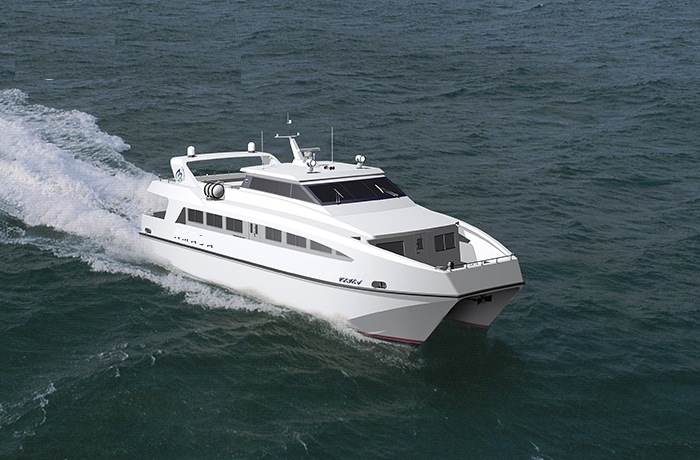The proposed high-speed ferry service operating between locations along the Maryland section of the Bay is generating strong reactions, following the release of a feasibility study. To the south, the Hampton Roads region is exploring its own high-speed ferry to help ease traffic congestion.
Despite having several bridges and tunnels, driving across the water often experiences delays between the peninsula (Newport News and Hampton) and the south side. Consequently, Hampton Roads Transit (HRT) is looking into ferry service between designated points in Newport News, Hampton, and Norfolk. A preliminary feasibility study has recently been shared with the city of Newport News.
A ferry named the Zephyr functioned between Hampton and Norfolk from 1999 until 2002. The boat provided service on a 2-hour schedule with a fare of $5 per trip, but the service was discontinued due to low ridership.
This time, HRT is optimistic about increased demand and believes that improved planning may make a ferry system viable once again. Even with the ongoing expansion of the Hampton Roads Bridge Tunnel (HRBT), HRT forecasts that the number of people needing to cross the water will grow in the future. They anticipate that an expanding workforce in the area will put greater strain on the local transportation systems over time.
The study outlines potential landing sites, detailing the pros and cons of each. Some locations will require significantly more investment to develop than others. For instance, a site at the end of 28th Street in Newport News is conveniently located near Newport News Shipbuilding and various transport hubs. However, it currently lacks any existing infrastructure. Permits, dredging, and construction will be prerequisites, which requires both money and time.
Other potential peninsula locations include 23rd Street in Newport News, the Air and Space Center in Hampton, and the Hampton Maritime Center. In Norfolk, the ferries could dock at Waterside, allowing riders to connect with the existing Portsmouth ferry service at that location.
New, faster boats will also be necessary. The current ferries that operate between Norfolk and Portsmouth are not fast enough for the longer routes between the peninsula and the south side, nor are they suitable for open, unprotected water. The study recommends a catamaran ferry capable of reaching at least 30 knots for safety and punctuality. The vessel would need to accommodate a minimum of 150 passengers, possibly more. The study estimates that acquiring three ferries would exceed $16 million, with annual operating costs ranging from $2 to $3 million, depending on the service schedules.
Funding is expected to come from multiple sources, according to Tom Becher, Communications Manager for HRT. “Funding will be shared among the cities, and we will pursue grants for startup expenses,” he stated. The ticket price, which is still to be determined, will need to be affordable enough to attract riders while also covering operational costs.
Unfortunately, due to security restrictions, the ferries cannot stop at Newport News Shipyard or the Norfolk Naval Shipyard, both of which are major employers along the waterway. “The waterways near those facilities are restricted,” noted Becher. These locations face daily traffic and parking challenges, making them prime candidates for a new commuting option. Becher emphasized that the ferries will be available to the public, making it impractical to restrict ridership to employees of one or two facilities.
The current plan does not incorporate stops at tourist destinations such as Fort Monroe. The primary aim of the ferry service is to facilitate travel between populated areas and employment centers. While tourists may use the ferries, the priority remains on accommodating the commuting workforce.
The strategy is still evolving and will continue to be refined. Eventually, the plan will also be presented to other cities including Norfolk and Hampton.

